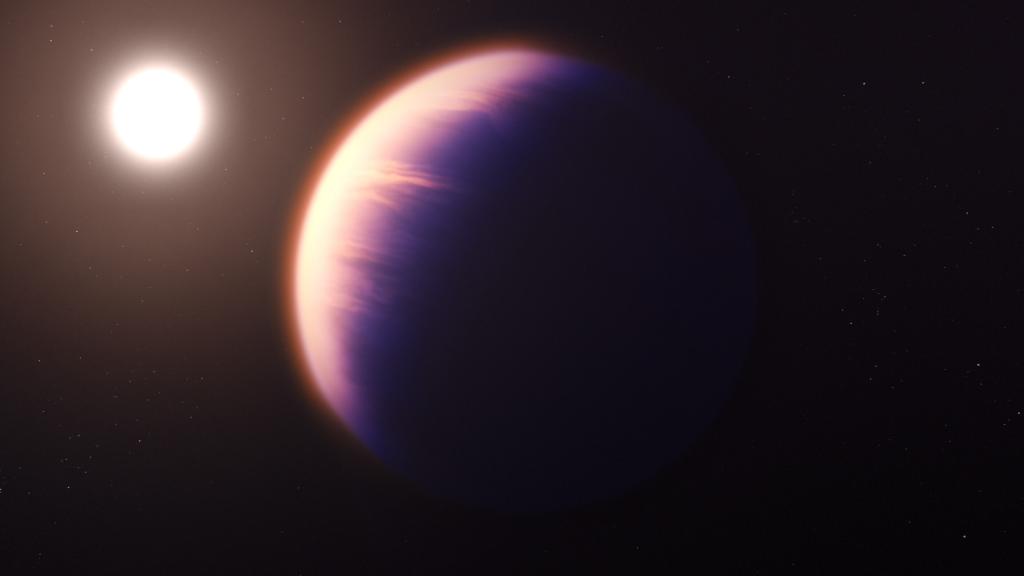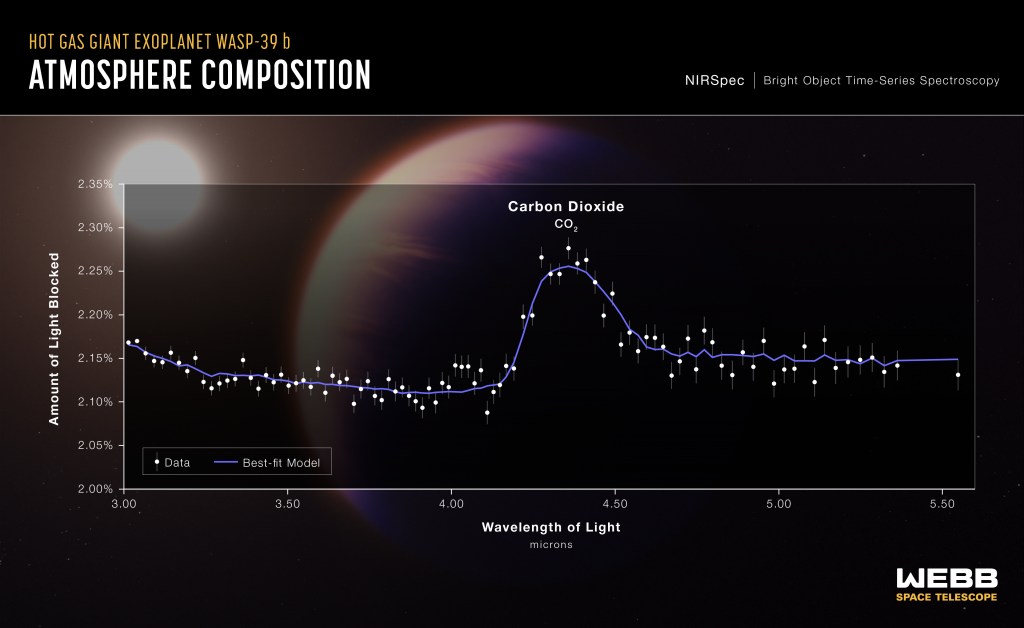How did James Webb telescope detect CO2 in a giant Jupiter-like planet? Experts tell us
Detecting CO2 allows experts to understand the history and evolution of planets

Scientists have found clear evidence of carbon dioxide in a faraway world for the first time.
The Jupiter-like exoplanet where the gas was found orbits a star 700 light years away.
This finding, made possible due to the James Webb Space Telescope (JWST), was published in a preprint paper. It has been accepted for publication by the journal Nature.
The mass of WASP-39b is roughly a quarter of Jupiter’s and the planet is 1.3 times wider, according to the United States National Aeronautics and Space Administration (NASA).
The exoplanet orbits very close to its star — only about an eighth of the distance between the Sun and Mercury. So, it completes one orbit in just over four Earth days.
Detecting CO2 allows experts to understand the history and evolution of planets, scientists noted.
JWST turned its powerful eyes on the exoplanet on July 10, 2022, observing and collecting data for roughly eight hours, Agnibha Banerjee, a PhD Student at the Open University, United Kingdom, told Down To Earth (DTE). He is a part of the study.
Temperatures as high as 900 degrees Celsius were recorded on WASP-39b, experts said. Gases expand in a hot environment, inflating the atmosphere.
Banerjee said:
This combination of a short year and a bloated atmosphere made it the perfect target for initial observations with JWST.
It also helped that this planet had clear skies, allowing JWST to observe the atmosphere,
Vivien Parmentier, associate professor in physics and tutorial fellow at Somerville College at the University of Oxford, told DTE. He was also involved in the study.
“This specific observation is part of the ‘Early Release Science’ observation that becomes public as soon as they are taken. In the coming years, JWST will observe more exoplanets than Hubble has ever observed!” the expert added.
Deep space breakthrough
Observing CO2 can be tricky. Earlier observations from Hubble and Spitzer Telescopes were not conclusive, Banjeree said.
Experts look at the colour of the light (or wavelength) to detect CO2. “It is almost impossible to observe from Earth because our atmosphere is not transparent at these wavelengths,” Parmentier said.
JWST, which is 1.5 million kilometres from Earth, is armed with a spectrograph. The instrument separates white light into infrared rainbows of colour, Natalie Batalha, professor of astrophysics and director of astrobiology, The University of California, Santa Cruz, wrote on Twitter.
This is similar to how a prism separates white light into a rainbow, according to experts.
The instrument aboard JWST looked for changes in the brightness of the light coming from the WASP-39b’s sun-like star. When WASP-39b passes in front of its star and Earth, the star’s light dims.
“Some of this light passes through the exoplanet’s atmosphere on its way to reach us,” Banerjee explained.
The planet’s atmosphere filters the light coming from the star, Parmentier noted. The amount of light filtered, Batalha highlighted, can vary depending on the molecules in the atmosphere.
When this light reaches the instrument on JWST, it is split into different colours or wavelengths.
This allows scientists to observe subtle differences in the amount of light absorbed by the exoplanet’s atmosphere in different wavelengths, Banerjee explained. This technique is called transmission spectroscopy
Scientists then make a graph, plotting the amount of light blocked versus colour.
The graph showed a bump at a wavelength of 4.3 micrometres, corresponding to the wavelength at which CO2 absorbs light, Batalha wrote.

This is a great milestone for exoplanets science and JWST, she added.
By estimating the carbon to oxygen ratio in a planet’s atmosphere, scientists can get an idea of where in the protoplanetary disk the planet formed, Banerjee noted. A Protoplanetary disk is where planets originate. It is commonly found around newly formed stars, experts said.
This would give us a better view of planet formation as well as the history and future of our solar system, they added.
Scientists hope to observe the atmospheres of rocky planets like Earth and Venus. “One system, in particular, is the TRAPPIST-1 System, which has seven rocky planets,” said Banerjee.
Some of these rocky planets exist in a region where water can be liquid,” the scientist siad. It could also have similar chemistry to that on earth, he added.
Sandeep Raiza — Content Writer, Website Designer, SEO Strategist, and WordPress Expert AI specialist delivering impactful digital solutions that drive business growth.Combining creative storytelling with technical expertise.